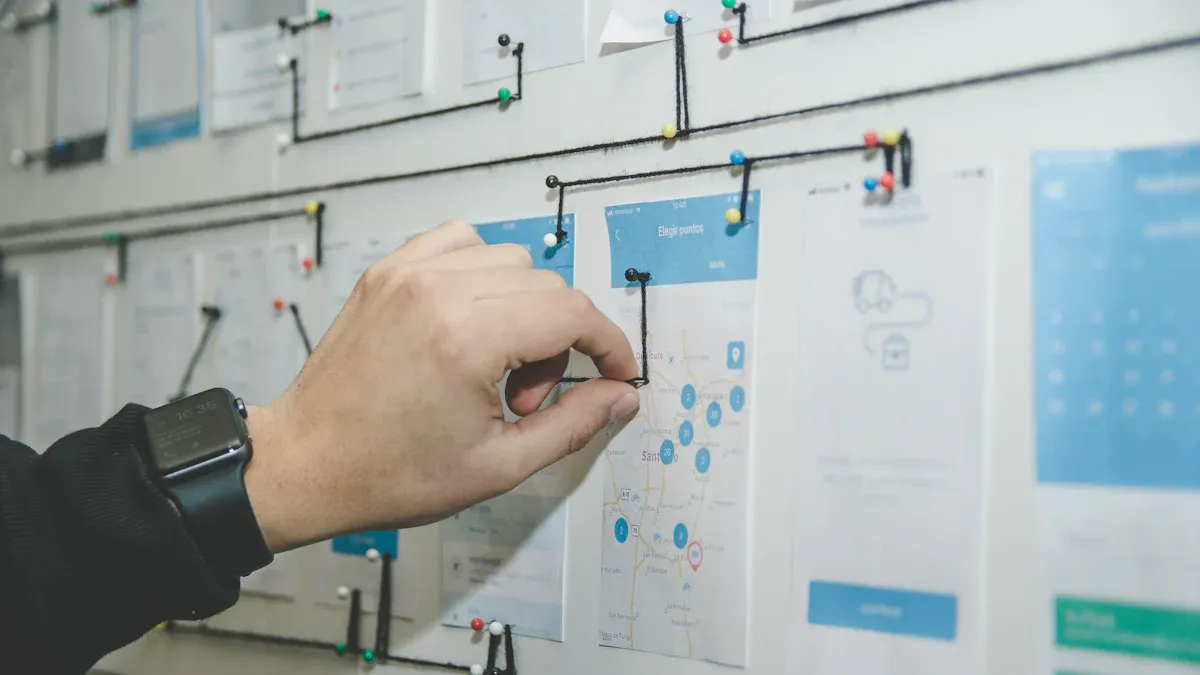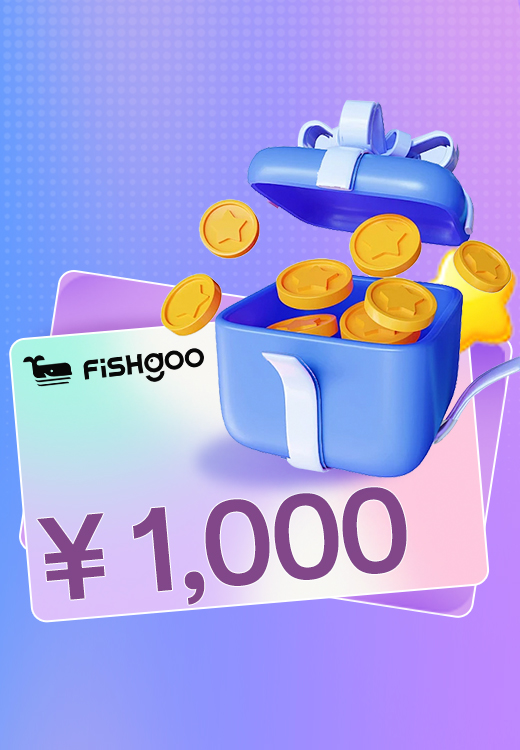Navigating Returns: A Step-by-Step Guide to Cross-Border After-Sales Service

You have special problems when you handle returns for orders from other countries. Cross-border ecommerce return rates are 25%. This means you must get ready for harder cases than local sales. Platforms like Fishgoo help you with clear messages, support in many languages, simple rules, and quick automation. You can use self-service tools to stay in charge. You also get honest prices. Talking to customers early helps you fix issues before they get bigger. Think about your current Cross-Border After-Sales Service and ask if you help customers from all over the world.
Key Takeaways
Cross-border ecommerce has a return rate of 25%. Make clear return policies to handle returns well.
Tell international customers the return rules clearly. Use easy words and give simple steps to follow.
Keep up with international rules. Learn the laws in each country. This helps you avoid customs trouble and legal issues.
Give customers different ways to return items. Give quick refunds. This helps build trust and makes customers want to buy again.
Use technology and automation to make returns easier. This saves time and makes customers happier.
Cross-Border Ecommerce Return Policy
Policy Essentials
You need strong rules for cross-border ecommerce returns. These rules must handle the hard parts of returns from other countries. They also need to tell customers what to expect. Big global stores use some main ideas in their return service:
Return eligibility and conditions: Say which items can be sent back and what must be true for returns.
Return timeframe: Tell customers how many days they have to send items back.
Refund and exchange options: Explain how you give refunds for different returns.
Return process and instructions: Give easy steps for starting a return.
Shipping costs and responsibilities: Say who pays for sending items back.
Processing times: Tell how long the return will take.
Contact information: Give clear ways for customers to ask about returns.
Tip: Check your return rules often. This helps you keep up with new customer needs and laws.
Cross-border ecommerce returns need more papers than local returns. You may need customs forms, RMAs, and invoices. The process is harder because of customs rules and different policies in each place.
Aspect | Cross-Border Returns | Domestic Returns |
|---|---|---|
Customs forms, RMAs, commercial invoices | Minimal documentation | |
Complexity | High due to customs regulations | Low |
Return Policy Variability | Varies by region and market | Generally consistent |
Communicating to International Customers
You must explain your cross-border return rules clearly to customers in other countries. Use easy words and break things into simple steps. Tell who pays for shipping and customs fees. Say how long refunds take and list items that cannot be sent back.
Give downloadable prepaid return labels with customer service.
Use return portals that make prepaid labels for customers.
Put a return label in the box for countries with many returns.
Note: Clear return rules help you keep customers. If you do not explain your cross-border return service well, customers may buy from someone else.
You should make your return rules easy to find at every step for customers. Match your policy words with your brand’s values. Offer at least one free way to return items to help customers feel safe buying. Update your cross-border return rules often to fit new markets and customer needs.
Legal and Compliance for Cross Border Returns
International Regulations
You must follow many rules when you handle cross-border returns. These rules change from one country to another. You need to know the main types of regulations that affect your business.
Consumer protection laws set standards for product safety and dispute resolution. Each country has its own rules. You must check these laws before you sell or accept returns.
Tax regulations decide how you pay taxes in different places. These rules can change how you process returns and refunds.
Intellectual property laws protect ideas and products. Some regions have strict rules about what you can ship or return.
Note: Always check the local laws before you accept a return from another country. This helps you avoid problems with customs or legal issues.
You must stay updated on changes in these regulations. Some countries update their rules often. You can use platforms like Fishgoo to help you manage compliance. Fishgoo provides support for international returns and helps you follow the right steps.
Taxes and Duties
Taxes and duties can make cross-border returns more expensive. You need to understand how these costs affect you and your customers.
Many customers face surprise fees when their package arrives. This can cause them to reject the parcel or abandon their cart.
You should show all costs upfront. Clear pricing helps customers trust you and reduces confusion.
If you explain taxes and duties early, you can avoid problems and keep customers happy.
Tariffs can raise the cost of return shipping. You may need to pay re-import duties and extra fees.
Some businesses pass these costs to customers. This can make customers unhappy and hurt your reputation.
If you do not explain return costs, customers may lose trust and stop buying from you.
Customs clearance can slow down returns. Each country has different rules for tariffs and duties. You must learn these rules to avoid delays and extra costs. Fishgoo’s transparent pricing and support can help you manage these challenges. You can use their tools to show costs clearly and keep your returns process smooth.
Return Eligibility and Conditions
Criteria for Returns
You need to set clear rules for which items you accept for return. Most major ecommerce platforms make their return policies easy to find and simple to understand. You should do the same for your cross-border orders. Customers want to know if their product qualifies for a return before they start the process. You can help them by listing the main criteria for returns.
The product must be in its original condition and packaging.
You should check if the item is unused and undamaged.
Customers must start the return within the allowed timeframe.
Some products, like custom goods or perishables, may not qualify for returns.
You need to explain who pays for the shipping cost when a return happens.
You can work with logistics providers who know how to handle cross-border returns. These partners can help you manage inventory and warehousing. You may also need to partner with customs brokers to make sure your returns follow all regulations.
Criteria | Description |
|---|---|
Condition | Item must be unused and in original packaging |
Timeframe | Return must start within set days |
Product Type | Some items may not qualify for returns |
Shipping Cost | Clarify who pays for return shipping |
Tip: Make your return criteria easy to find on your website. This helps customers trust your brand and reduces confusion.
Acceptable Reasons
You should list the reasons why you accept returns. Customers expect a smooth return process, even for cross-border orders. You need to manage returns for many reasons, and you must handle each case quickly.
The product arrived damaged or defective.
The item does not match the description or is the wrong product.
Customers changed their mind and want to return the item.
The product does not fit or meet expectations.
Managing returns can be hard because of customs and extra costs. You may face higher shipping rates and duties. If you do not follow the rules, you could have delays or extra fees. Customers want returns to be as easy as local brands. You should work to make your return process simple and fast.
Note: Fast and fair returns help you keep customers and build a strong reputation.
Return Timeframes and Options
Return Windows
You should set clear times for cross-border returns. Customers want to know how long they have to return things. Most brands let people return items for 14 to 30 days. Tell customers about the return window before they buy. This helps them feel safe when shopping from another country.
A simple table can show your return windows for cross-border ecommerce:
Region | Standard Return Window | Extended Holiday Window |
|---|---|---|
North America | 30 days | 45 days |
Europe | 14 days | 30 days |
Asia-Pacific | 15 days | 30 days |
You should follow local laws for return windows. Some places need longer times for returns. You can give more days to return items during holidays or sales. This makes your store better for cross-border shoppers.
Tip: Remind customers about the return window in your order confirmation email. This helps stop confusion and missed deadlines.
Refunds and Exchanges
You must give clear choices for refunds and exchanges. In cross-border ecommerce, you need to handle returns fast and keep customers updated. Most shoppers want to know how much money they will get back and when.
Here are common options for refunds and exchanges in cross-border ecommerce:
You can give a full refund for approved returns.
You may let customers exchange for the same or a different item.
You should finish refunds within 14 business days to keep customers happy.
You need to help customers in their own language and during local hours.
You can let customers pick how to return items: courier pick up, postal delivery, drop off at third-party spots, or return in store.
You should use tracking so customers know where their returns are.
You can use a flexible returns portal to handle different cases.
Customers want returns to be fast and easy. You should tell them about their refund status. If you make returns simple, customers will trust your store and want to shop again.
Note: Fast refunds and easy exchanges help you stand out in cross-border ecommerce. Customers will remember your good service and come back to shop more.
Cross Border Returns Process

Initiating a Return
You need to make it easy for customers to start a return. Selling to other countries has more steps than selling at home. Customers want returns to be simple, even if they live far away. Return management software can help with this. These tools let you track returns, send updates, and keep records.
Most websites let customers start returns online. You can put a return button on the order history page. Some companies use software that sends emails with return steps. This helps customers know what to do next.
Here is how you can make returns smooth:
Let customers log in and pick what they want to return.
Ask them to say why they want to return the item.
Show the return rules before they move on.
Use software to check if the item meets your rules.
Give a return label or shipping steps.
Let customers track their return online.
Tip: Return management software helps you answer questions faster. It also helps you make fewer mistakes. This makes your returns work better.
You should help customers in different languages. Many people feel worried about returns from other countries. Clear steps and friendly help make returns less scary.
Return Instructions
You must give clear steps for every return. Good steps help customers avoid mistakes and make things faster. When you write your return steps, include these points:
Say which products can be returned and any special rules.
Tell customers how long they have to return items. Make it clear if time starts at purchase or delivery.
Explain refund choices. Some get all their money back, others get store credit or an exchange.
List each step in the return. Use easy words and break it into small parts.
Say who pays for shipping. Some returns are free, but sometimes the customer pays.
Tell how long each step will take. Say when customers will get their refund.
Give contact info for questions about returns.
You can use a table to show your return steps:
Step | What to Do |
|---|---|
Check eligibility | Make sure your item meets the return conditions |
Start return | Log in and select the item to return |
Choose reason | Pick a reason for your return |
Prepare package | Pack the item as instructed |
Ship item | Use the provided label or follow shipping steps |
Track status | Watch for updates in your account |
Get refund | Wait for the refund or exchange confirmation |
Return management software can send these steps automatically. You can also add tracking links so customers always know where their return is.
Note: Clear return steps help stop mistakes. They also help you finish returns faster and keep customers happy.
If you want to make returns better, check your steps often. Ask customers for feedback after they return something. Use this feedback to make your return process even better.
Logistics and Cost Management

Shipping Solutions
When you handle cross-border returns, you have many choices. International shipping can take longer because of customs checks. Customs rules and currency changes can also change delivery times and costs. You can pick from carriers like UPS, FedEx, DHL, USPS, Starlinks, APG eCommerce, Quantium, and Nova Poshta. Each carrier has different speeds and prices. Many companies use third-party logistics to make returns faster and cheaper. The table below shows how each shipping solution affects your returns:
Shipping Solution | Impact on Delivery Times | Impact on Costs |
|---|---|---|
Third-Party Logistics | Faster processing | Lower shipping costs |
Automated Shipping | Efficient tracking | Cost-effective options |
Multi-faceted Logistics | Quick response to demand | Reduced total shipping costs |
Note: Customs checks can slow down delivery. Changes in currency can also change your costs.
Value-Added Services
You can improve your returns by using value-added services. Fishgoo and other companies offer things like consolidation, smart packaging, and cargo insurance. These services help keep your items safe and save money. For example, you can put many orders in one box to pay less for shipping. You can also use strong, waterproof, or shockproof packaging to protect products. Insurance helps if something is lost or broken.
Service Type | Description |
|---|---|
Freight Forwarding | Air, sea, rail, and truck shipping for all package sizes. |
Cargo Insurance | Protect your shipments against loss or damage. |
Smart Packaging | Reinforced, waterproof, or shockproof packaging. |
E-commerce Solutions | Buyer consolidation, real-time tracking, order management. |
Cost Control Strategies
You can save money by working with good logistics partners and using smart plans. Third-party logistics providers help with hard parts like checking returns and restocking. This lets you focus on your main business. You do not need your own warehouse or delivery trucks, so you save money. Here are some tips:
Make a clear return policy to stop confusion and avoid extra returns.
Give easy return steps and more than one choice for customers.
Track returned items to keep better control of your inventory.
Work with a returns hub for fast customs checks.
Suggest exchanges or store credit to keep more sales.
Tip: Letting others handle logistics saves you money and makes your supply chain work better. This makes customers happier and helps your business grow.
Technology in Cross-Border After-Sales Service
Return Automation
Return automation can make your after-sales service much easier. When you use automation, you spend less time on returns. This helps you focus on growing your business. Many companies use returns software to connect each part of the process. You get real-time tracking, fewer errors, and faster help for customers.
Here is how return automation helps your cross-border after-sales service:
Feature | Benefit |
|---|---|
Automating the post-purchase process | Makes things easier and saves your team time. |
Integrating returns software | Gives customers real-time tracking and a better experience. |
Seamless integration | Cuts down on manual work and helps everyone work faster. |
Using third-party logistics (3PL) | Lets experts handle returns, so it is quicker and easier. |
Returns management for cross-border sales | Offers free RMA and full support for your cross-border after-sales service. |
Fishgoo uses smart technology to automate returns. You can see every step, from when a customer starts a return to when they get their refund. This makes your after-sales service more reliable and clear.
Tracking and Communication
You need good tracking and clear messages to build trust. Real-time tracking gives you and your customers quick updates. You always know where a return is and what will happen next. Automated messages keep everyone updated at each step.
Some key benefits of real-time tracking and automated notifications include:
You can always see where a return is.
Customers get updates about their return status.
You get alerts if there are any problems or delays.
Refunds and exchanges happen faster, so customers are happy.
Your support team has less work because customers can check their own status.
You can plan your inventory better with new data.
Fishgoo’s platform uses these tools to show you every return clearly. You get fewer questions from customers and more time for other work. When you use this technology, your after-sales service is faster, more accurate, and easier for everyone.
Overcoming Cross-Border Return Challenges
Preventing Avoidable Returns
Managing cross-border returns can be tough. High shipping costs and customs rules make it harder. Different cultures can also cause problems. Customers get upset when things take too long. You can stop many returns by using smart ideas.
Tell customers when their order will arrive and how to track it.
Make a simple returns process for each country.
Use more than one carrier to give cheaper shipping choices.
Work with a global shipping partner to make things easier and help customers.
Reverse logistics is important for stopping extra returns. It lets you track packages and check items fast. You can handle returns quickly and make fewer mistakes. This keeps customers happy. You also save money by shipping items together and using better packaging.
Tip: Show clear product details and good photos. This helps customers pick the right things and lowers returns.
Handling Delays and Disputes
Sometimes, returns from other countries are late or have problems. You need to act fast to keep customers happy. Big online stores use different ways to fix these issues.
Make a simple returns policy that is easy to read. This helps both you and your customers.
Use good reverse logistics to handle returns smoothly.
Give easy ways to return items and share local contact info.
Answer emails and support questions fast to stop frustration.
Add help links and return steps on your tracking pages.
Talk clearly to turn problems into trust.
Reverse logistics helps you fix delays and problems. You can track every step and update customers. This stops small issues from getting bigger. These steps help you build trust and get more repeat buyers.
Challenge | Solution |
|---|---|
Delays in shipping | |
Customs complications | Provide clear documentation |
Customer disputes | Offer responsive support |
High costs | Streamline reverse logistics |
Note: Acting fast and talking clearly helps you solve cross-border return problems.
Best Practices for Cross-Border After-Sales Service
Staff Training
You need a team that knows how to help with cross-border after-sales service. Your staff should learn the rules for returns and exchanges in each country. Teach your team about the different ways customers can return items. Use real-life examples when you train your staff. Show them how to answer questions about refunds and exchanges. When your team understands the steps, customers are happier. You also make fewer mistakes and exchanges go smoother for everyone.
Tip: Train your team often. Tell them about any changes to your return policy or new return choices.
Performance Monitoring
You must check how well your after-sales service is working. Use easy tools to see if customers are happy. Ask customers what they think after they use exchanges or other return choices. Make a table to keep track of important numbers:
Metric | Target | Actual |
|---|---|---|
Customer Satisfaction | 95% | |
Average Refund Time | 7 days | |
Successful Exchanges | 98% |
Look at these numbers every month. Try to find patterns. If customer happiness drops, fix the problem quickly. Stop small problems before they get worse.
Continuous Improvement
You should always try to make your service better. Check your exchange and return process often. Ask your team for ideas to improve. Listen to what customers say about their experience. Try new ways to make exchanges faster and help customers feel good. Update your website with easy steps for all return choices. When you make your service better, customers trust you more and want to shop again.
Note: Even small changes can help customers feel happier. Keep learning and listen to feedback.
You can handle cross-border returns by using simple steps. Work with local carriers to move items faster. Automate your return policy to save time. Always tell international customers what is happening. Use technology to make things easier for everyone. This helps your business grow in other countries. The table below shows how these steps help both sellers and buyers.
Benefit | Description |
|---|---|
Customer Satisfaction | A clear return policy builds trust with international customers. |
Brand Loyalty | Customized processes help cross-border retailers grow globally. |
Operational Efficiency | Automation saves time and improves accuracy for international buyers. |
Checklist for a good plan:
Support for international customers
Personal touches for global growth
Track important numbers
Use automation tools
Keep making things better
Use technology and outside services to get the best results for cross-border sellers and buyers.
FAQ
What makes cross-border returns different from local returns?
Cross-border returns need more paperwork and customs checks. You must follow rules for each country. Shipping takes longer. You pay extra fees. Customers expect clear steps. You must explain costs and timeframes. Cross-border returns require strong policies and good communication.
How do you handle cross-border shipping costs for returns?
You can use third-party logistics to lower cross-border shipping costs. Some companies offer consolidation. You combine items in one parcel. This saves money. You must tell customers who pays for cross-border shipping. Clear rules help everyone understand cross-border costs.
What documents do you need for cross-border returns?
You need customs forms, invoices, and RMAs for cross-border returns. Each country asks for different papers. You must check cross-border rules before shipping. Good cross-border partners help you prepare documents. Missing papers can delay cross-border returns.
How do you track cross-border return shipments?
You use tracking numbers for cross-border parcels. Many platforms offer real-time cross-border tracking. Customers see updates online. You get alerts for cross-border delays. Tracking helps you solve cross-border problems fast. Fishgoo provides cross-border tracking tools for easy returns.
Can you offer cross-border exchanges instead of refunds?
You can give cross-border exchanges. Customers pick a new item. You ship it after you get the cross-border return. Exchanges help keep cross-border sales. You must explain cross-border exchange steps. Fast cross-border exchanges build trust with global buyers.
See Also
Strategies to Enhance Your Global E-Commerce Logistics Effectively
Simplified Shopping: Manage Receipts and Inspections for Chinese Goods
Key Global Shipping Services Every Newbie Should Know in 2025
Five Compelling Reasons to Select Fishgoo for International Purchases
A Comprehensive Guide for International Students Shopping on Taobao


